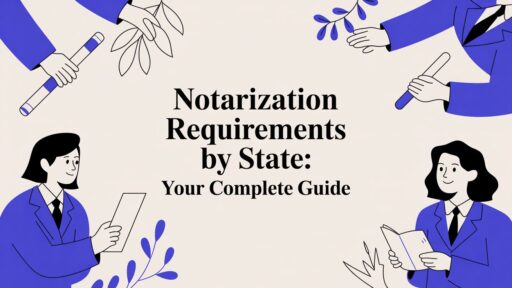Crafting a compelling quote is an essential skill in both personal and professional settings. Whether it’s for a business proposal, a memorable speech, or a social media post, a well-crafted quote can capture attention and convey a powerful message. Understanding the nuances of creating impactful quotes can elevate communication and leave a lasting impression.
The art of quote-making involves more than just stringing words together. It requires clarity, brevity, and a touch of creativity. A great quote resonates with its audience, sparking thought or emotion. For businesses, an effective quote can mean the difference between winning a client or losing out to a competitor. In everyday life, quotes can inspire and motivate, becoming mantras that guide actions and decisions.
By mastering the techniques of quote creation, individuals can enhance their ability to communicate ideas succinctly and persuasively. This article delves into the strategies and tips that can help anyone craft quotes that stand out.
Understanding Quotes
Grasping the essence of quotes enhances their creation and application. Quotes distill complex ideas into concise, impactful statements.
Definition of a Quote
A quote encapsulates words or phrases spoken or written by someone else, used to convey a specific idea or emotion. Direct quotations involve using the exact words from a source, while paraphrased quotes restate the original idea using different words. Both forms aim to communicate the original message effectively.
Importance of Using Quotes
Quotes add authority, clarity, and interest to communication. In speeches or writing, they can substantiate arguments and provide perspective. In professional settings, quotes infuse originality and authenticity into presentations and collaborations. For example, a strong quote in marketing materials can enhance brand messaging.
Steps to Make a Quote
Crafting a quote involves a structured approach to capturing and conveying powerful messages. Following specific steps ensures accuracy and impact.
Step 1: Identify the Source
The first step in making a quote involves pinpointing the origin of the words or ideas. Confirm the source to ensure the quote’s authenticity and credibility. For example, when quoting a famous person, verify that the words were indeed spoken or written by them.
Step 2: Integrate the Quote into Your Text
Smoothly weaving the quote into the narrative enhances readability and coherence. Use appropriate punctuation to distinguish the quote from your own words. Contextualize the quote by providing background or explaining its relevance to the current discussion.
Step 3: Provide Proper Attribution
Giving credit to the original author respects intellectual property and strengthens the quote’s authority. Attribute the quote clearly, mentioning the name of the person or publication and, when possible, the date. For instance, use phrases like “according to” or “as stated by” to attribute the quote.
Formatting Quotes Correctly
A well-formatted quote enhances its readability and impact. Correct punctuation and structure ensure clarity and preserve the quote’s intended meaning.
Using Quotation Marks
Quotation marks indicate spoken or written words by another person. Use double quotation marks (“ ”) to enclose direct quotations. Keep punctuation within the quotation marks if occurring inside the quoted material. For example, “The book is on the table,” she said.
Punctuation with Quotes
Punctuation rules differ when incorporating quotes. Place commas and periods inside the quotation marks. Position colons and semicolons outside unless they’re part of the quoted material. Question marks and exclamation points depend on whether they pertain to the quote or the entire sentence. For instance, Did she really say, “It’s impossible”?
Block Quotes for Longer Excerpts
Block quotes better present lengthy quotations. For quotes surpassing four lines, use a block format without quotation marks. Indent the quote and maintain double-spacing for consistent text flow. This format helps distinguish the quoted portion from the surrounding content, enhancing readability.
Common Mistakes to Avoid
In making a quote, avoiding errors ensures clarity and preserves the integrity of the message. Several common mistakes detract from quote effectiveness.
Misquoting
When quoting, altering words or context misrepresents the original message. For instance, omitting words or changing phrases can distort meaning. Accurate transcription of the source maintains its intended impact, and referencing trustworthy sources like speeches or interviews ensures credibility.
Incorrect Punctuation
Errors in punctuation, such as misplaced commas or incorrect use of quotation marks, can change meaning entirely. Use commas to introduce quotes correctly and position quotation marks to encompass the quoted text fully. Consistent use of proper punctuation enhances readability and ensures the intended emphasis.
Lack of Attribution
Quotes without proper attribution diminish authority and credibility. Include the author’s name, publication, or context to respect intellectual property and provide context. Citing the source accurately builds trust and enriches the quote’s value with the audience.
Tools and Resources for Making Quotes
Making effective quotes requires access to various tools and resources that ensure accuracy and enhance style. These resources aid in citation, formatting, and maintaining consistency.
Online Citation Tools
Online citation tools simplify the process of creating and managing quotes by providing structured formats. Tools like Citation Machine and EasyBib offer automatic generation of citations, ensuring adherence to various citation styles like APA, MLA, and Chicago. These resources help users verify the accuracy of their quotes and citations, minimizing errors and enhancing authority.
Style Guides
Style guides provide essential rules and guidelines for quote formatting and usage. The Chicago Manual of Style and the Associated Press (AP) Stylebook cover diverse aspects such as punctuation and attribution. These guides ensure that quoted material remains consistent with professional standards and enhances the readability of written content. By adhering to these standards, writers can maintain a coherent and authoritative tone in their work.
Discover the Power of BlueNotary:
Integrate your Business, Title Company, or Law Firm to Satisfy your Customers and Decrease Turnaround
Get a document Notarized/Sign-up
Join the Free Notary Training Facebook Group
Conclusion
Mastering the art of crafting quotes holds immense potential for enhancing communication in both personal and professional settings. By focusing on clarity, brevity, and creativity, individuals can create quotes that not only convey powerful messages but also inspire and motivate their audience. Understanding the nuances of quoting, including proper attribution and formatting, ensures that quotes maintain their integrity and authority. Armed with the right strategies and tools, anyone can effectively incorporate quotes into their communication, leaving a lasting impression and elevating their expression to new heights.
Frequently Asked Questions
Why are quotes important in communication?
Quotes enhance communication by capturing attention and conveying powerful messages succinctly. They add authority, clarity, and interest, substantiating arguments and infusing originality into both personal and professional interactions. Quotes distill complex ideas into impactful statements, making them effective tools for inspiring and motivating audiences.
What are the steps to effectively craft a quote?
The steps include identifying the quote’s source to ensure authenticity, smoothly integrating the quote into the text for coherence, and providing proper attribution to respect intellectual property. Following these steps helps create impactful quotes that resonate with audiences.
How should quotes be formatted for better readability?
Quotes should be enclosed in quotation marks, with correct punctuation for integration into the text. For longer excerpts, use the block quote format to distinguish them from surrounding content. Proper formatting enhances clarity, readability, and impact.
What common mistakes should be avoided when crafting quotes?
Avoid misquoting, incorrect punctuation, and lack of attribution, as these errors can detract from a quote’s effectiveness. Ensuring accuracy and providing proper credit preserves the integrity of quotes and enhances communication skills.
What tools can assist in creating and managing quotes?
Online citation tools like Citation Machine and EasyBib simplify creating and managing quotes by providing structured formats and adhering to citation styles such as APA, MLA, and Chicago. Style guides, such as the Chicago Manual of Style and the AP Stylebook, offer essential formatting and usage rules.








